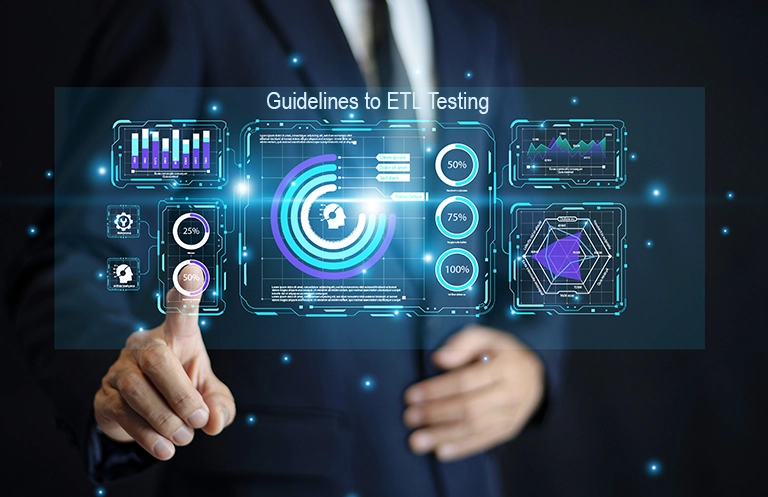According to the latest IEA report on the Global EV outlook 2024, global battery demand observed more than 40% growth in capacity, amounting to 750 GWh in 2023. High-voltage batteries used in electrification applications are safety-critical & expensive components. Hence, it is vital to have an intelligent battery management system (BMS) to ensure safe and reliable operations.
Battery Management: An Indispensable Factor to Safety
In high voltage battery applications, safety standards & regulations reduce the risks associated with critical events such as electricity fluctuations, fire, thermal runaway, or chemical leakage. Such high-power systems, if not handled properly, may lead to fires, explosions, environmental damage, and significant monetary losses.
By following and complying with the best practices and safety standards, manufacturers & operators can mitigate the possibility of accidents and ensure that the design, operation, and disposal of batteries and energy storage systems are executed safely. These guidelines are essential at every stage of battery usage, including production, installation, operation, maintenance, and disposal.
Key Safety Considerations in Battery Management Systems
- Fire Hazard & Thermal Runaway
A Thermal runaway occurs in the event of an abrupt increase in the temperature. This leads to further heat generation, reduces battery life, and even causes fires or explosions. Standards like UL9540 and IEC62133 help in ensuring safe options for thermal management and effective BMS for charge/discharge regulation. - Overvoltage & Overcurrent Protection
Overvoltage & overcurrent occurs if the battery pack is charged beyond its safe voltage limit or excessive current flows through the battery. BMS offers protection against such scenarios by means of hardware protection circuits, software algorithms, fault logging & alerts and communication protocols (i.e., CAN, I²C, MODBUS) for notifying external systems. - Electrical Hazards & Short Circuits
BMS monitors electrical hazards and short circuits by continuously monitoring the voltage, the current and the cell temperature. It employs mechanisms such as fuses, circuit breakers and MOSFET switches, etc. to isolate and disconnect faulty circuits. - Isolation & Ground Fault Detection
Automated fault detection and insulation monitoring devices. IMDs help prevent system and electric shock failure for HV battery management systems. This allows effective monitoring of electricity isolation and ensures safe system operation. - Chemical Leakage & Environmental Degradation
Lead-acid venting or lithium-ion cell leakage poses health and environmental dangers and is often overlooked. The ISO26262 and UL 1973 standards provide guidelines to ensure robust design and secure battery recycling.
Before we dive deep into the key safety standards and industry regulations, it is also important to understand the difference between product safety and functional safety.
| Product Safety | Functional Safety | |
| Focus Area | It ensures protection from hazards like thermal runaway, fire, or electric shock. It involves insulation, fireproof enclosures, and compliance with safety standards. | It focuses on preventing system failures that could lead to dangerous conditions. This includes fault detection, redundancy, and fail-safe mechanisms to maintain safe operation. |
| Key Considerations |
|
|
Key Safety Standards for Battery Management and Energy Storage Systems:
We have outlined the important safety protocols and industry regulations that should be considered and complied while designing a robust BMS system for any industry applications involving high-voltage battery systems.
| Standard | Category | Description |
| ISO 26262 | Functional Safety | Functional Safety of Electronic Systems in Automotive Applications |
| IEC 61508 | Functional Safety | Functional Safety for Electrical/Electronic Systems in Industrial Applications |
| ISO 13849 | Functional Safety | Safety Requirements for Control Systems in Industrial Machinery |
| IEC 60730 | Functional Safety | Automatic Electrical Controls for Household and Industrial Use |
| UL 9540 | Product Safety | Safety Standard for Complete Energy Storage Systems (ESS) |
| UL 1973 | Product Safety | Safety for Stationary Batteries and Automotive Applications |
| UL 2580 | Product Safety | Safety for Lithium-Ion Batteries in Electric Vehicles |
| IEC 62133 | Product Safety | Safety for Rechargeable Cells and Battery Packs |
| IEC 62619 | Product Safety | Safety for Lithium Batteries in Industrial Applications |
| IEC 62933 | Product Safety | Safety Framework for Grid-connected Energy Storage Systems |
| SAE J2929 | Product Safety | Safety for High-Voltage Lithium-Ion Batteries in Electric Vehicles |
| IEC 63056 | Product Safety | Performance and Safety of Large Lithium-Ion Batteries |
| NFPA 855 | Fire Safety | Fire Protection Standards for ESS Installations |
| IEEE 1547 | Grid Interconnection | Interconnection Standards for Grid-connected Storage Systems |
| IEC 62443 | General | Cybersecurity for Industrial Automation and Control Systems |
| UL5500 | General | Remote Management of Large Assets |
In this blog, we shall explore the key safety standards and their impact on BMS development:
1. IEC 61508: Functional Safety for Electrical/Electronic Systems in Industrial Applications
The IEC 61508 standard is the foundational standard for functional safety compliance in Battery Management System (BMS) design for industrial and automotive use. It outlines a risk-based approach to hardware and software design, thus mitigating the chances of failures and safety risk. Compliance with IEC61508 also increases the system reliability, reduces the downtime, and fulfills the regulatory requirements for demanding high power applications.
2. ISO 26262: Functional Safety for Automotive Applications
The ISO26262 standard takes all aspects of safety goal, assessment, requirements, FMEA, etc. during all stages of product development to identify and mitigate risk profiles. Various levels of ASIL (Automotive Safety Integrity Level) define the systems functional safety goals and the ability to deal with safety risks, with ASIL D being the most safety critical safety level.
3. ISO 13849: Safety Requirements for Control Systems in Industrial Machinery
ISO13489 is a globally recognized safety standard for control systems that proposes a systematic approach in achieving the target performance level (PL). It defines all necessary steps to perform risk analysis, safety functions and applied safety measures for battery systems.
4. UL 1973: Safety Standard for Batteries in Stationary Applications
UL1973 is the most important safety standard for battery systems used as an energy storage in various applications such as UPS, light electric rail (LER), electric vehicles or stationary applications including photovoltaics and wind turbine storage, etc. It covers functional safety analysis and testing of hardware & software components of the battery systems, and it is a mandatory compliance standard for selling energy storage solutions in North America.
5. UL 9540: Safety Standard for Energy Storage Systems and Equipment
The UL9540 standard aims to cover the safety of energy storage systems by evaluating how all functions/systems are designed, built, tested, and used on an overall system level. For any ESS system to be listed by UL9450, it must comply with the electrical safety, mechanical safety, thermal safety, fire safety, system performance & reliability, and system documentation related safety requirements.
6. IEC 60730: Safety Standard for Automatic Electronic Controls
The IEC60730 safety standard defines various testing and diagnostic methods to ensure the safe operation of embedded hardware, control applications and software modules used in household applications. Compliance with the IEC60703 standard is necessary to eliminate all risk profiles and prevent unsafe operations of the controlled equipment caused by system malfunctions.
Conclusion:
Advancing Battery Safety Standards
With the growing adoption of electrification and rapidly evolving battery technology & chemistry, a multitude of applications have emerged across different industries. In addition, different countries and regulatory bodies have adopted inconsistent standards & best practices, adding to the complexity landscape.
In this given situation and complex product design cycle, one must consider all safety & regulatory requirements and certification standards right from the product conceptualization stage and follow through the entire product development journey.
eInfochips, with in-depth expertise and in-house Battery Management System CoE (Centre of Excellence), has helped its automotive and industrial customers with end-to-end high-voltage BMS product design, development, safety compliance and certification, etc.
Contact our experts at bms@einfochips.com and schedule a meeting for more information.













